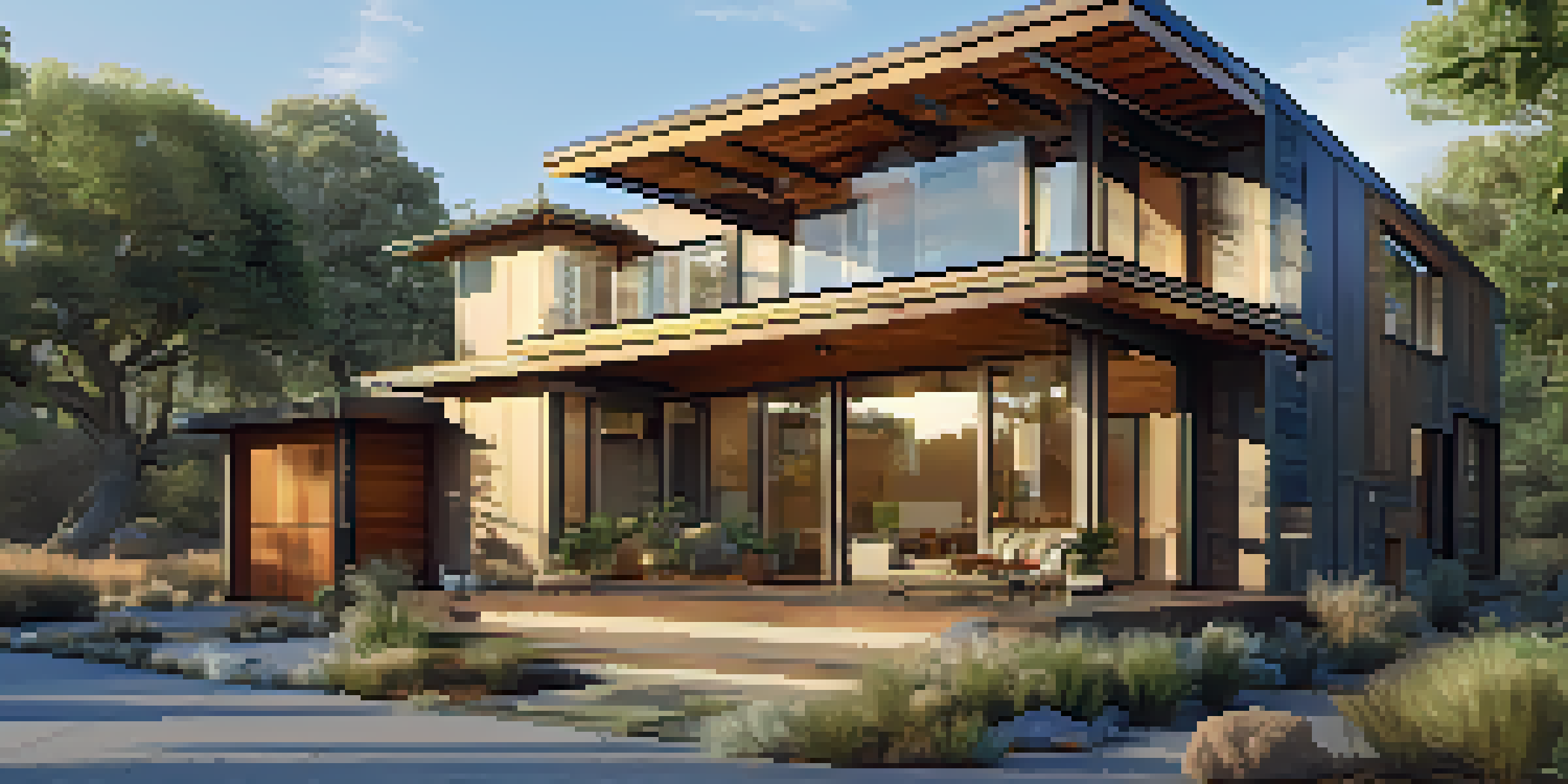Eco-Friendly Building Practices for Modern Renovators

Understanding Eco-Friendly Building Practices
Eco-friendly building practices focus on reducing environmental impact while enhancing the quality of life for occupants. These techniques prioritize sustainability, using materials and processes that are less harmful to the planet. By understanding these principles, modern renovators can contribute to a healthier environment and potentially reduce costs in the long run.
Choosing Sustainable Materials for Renovations
Selecting sustainable materials is a cornerstone of eco-friendly renovations. Options like reclaimed wood, recycled metal, and low-VOC (volatile organic compounds) paints can significantly reduce your carbon footprint. Not only do these materials help the environment, but they also add character and uniqueness to your space.
Embrace Sustainable Materials
Choosing materials like reclaimed wood and low-VOC paints is essential for reducing your renovation's environmental impact.
Incorporating Energy-Efficient Designs
Energy-efficient designs can drastically cut down on energy consumption in your home. Features such as proper insulation, energy-efficient windows, and strategically placed skylights can help maintain comfortable temperatures year-round. By investing in these designs, you’ll not only save on utility bills but also enhance your property's value.
Utilizing Renewable Energy Sources
Integrating renewable energy sources like solar panels or wind turbines can make your renovation even more sustainable. These systems harness natural resources to provide energy, reducing dependence on fossil fuels. While the initial investment may be higher, the long-term savings and environmental benefits are well worth it.
Enhance Energy Efficiency
Incorporating features such as proper insulation and energy-efficient windows can significantly lower energy consumption and utility costs.
Water Conservation Techniques in Renovation
Water conservation should be a priority in any eco-friendly renovation. Installing low-flow fixtures, rainwater harvesting systems, and drought-resistant landscaping can significantly reduce water usage. These strategies not only help the environment but also lower water bills, making them financially savvy choices.
Indoor Air Quality: A Key Consideration
Improving indoor air quality is essential for a healthy living environment. Using non-toxic materials, ensuring proper ventilation, and incorporating plants can help purify the air inside your home. This focus on health and comfort is increasingly important to modern renovators and their families.
Focus on Water Conservation
Implementing strategies like low-flow fixtures and rainwater harvesting can help reduce water usage and save on bills.
Waste Reduction and Recycling in Renovation Projects
Minimizing waste during renovations is crucial for sustainability. Consider donating unwanted materials, recycling old fixtures, or repurposing items whenever possible. This not only reduces landfill waste but also can add a unique touch to your renovation, showcasing your creativity and commitment to the environment.
The Future of Eco-Friendly Renovation Practices
As awareness of environmental issues grows, eco-friendly renovation practices are becoming more mainstream. Innovations in technology and design will continue to shape how we approach building and renovating. By staying ahead of these trends, modern renovators can lead the way in creating sustainable spaces that meet the needs of both people and the planet.